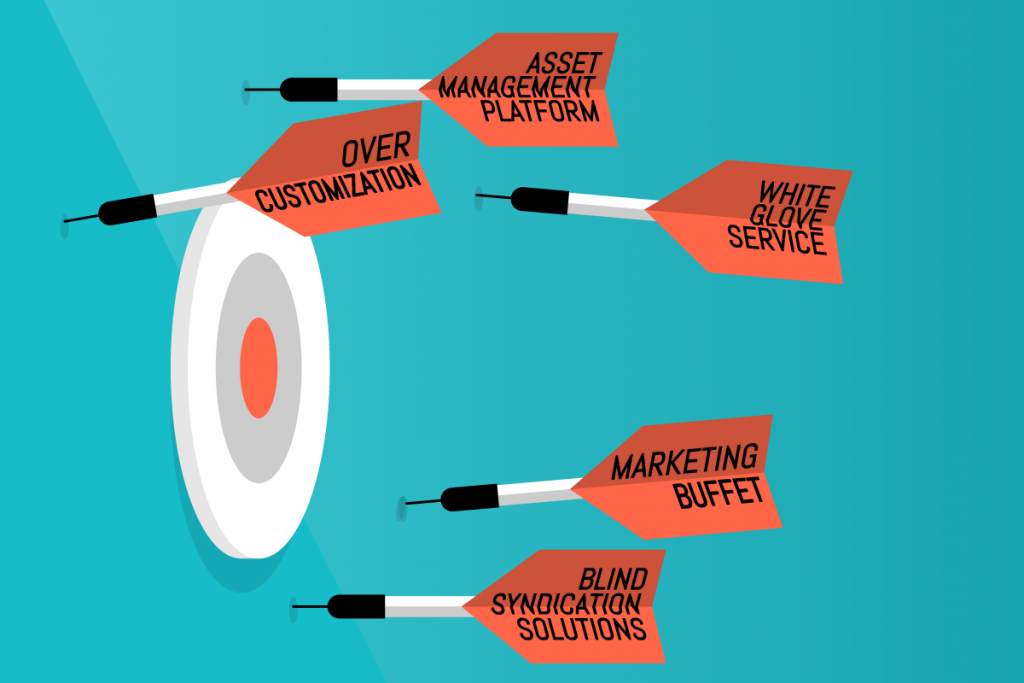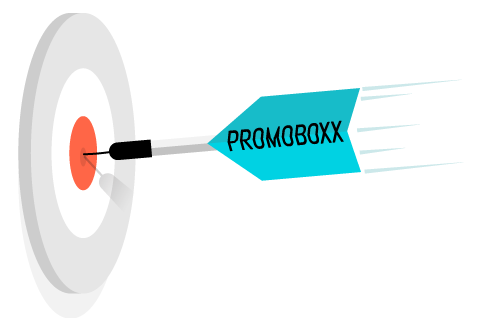

Are you doing all that you can to engage your independent retailers and expand your consumer reach? In this blog series, we will share five services that we believe fail to properly engage retailers. We’ll also share insights on strategies for better alignment. The first tactic we beg to differ with is: Asset Management Platforms.
Of the hundreds of retail marketers I’ve spoken to at manufacturing brands, about 90% of them have something in common: an asset management platform. While asset management platforms may seem like an easy way to provide marketing assets to retailers, there are serious pitfalls when it comes to retailer usage, ease-of-use and tracking. At Promoboxx, we believe in solutions that make the lives of brands and retailers easier, not more complicated.
Let’s take a deeper look at the limitations of asset management platforms:
When I ask brands simple follow-up questions like “How many of your retailers use this portal?” or “how many times each month are retailers promoting content from the portal?” a surprisingly small number of people at the manufacturer can typically answer these questions. Why, you may ask? Tracking actions outside the number of retailer accounts and the total number of asset downloads on a portal becomes a manual process. Portals often become a dumping ground for creative assets over time, so there’s no telling what type of content the retailers are promoting (or on which digital channels) after the retailer exits the portal.
One would think that given the overwhelming number of brands who have invested in creating and maintaining an asset management portal, the numbers would exist to prove their effectiveness. But it’s quite the opposite. Of the thousands of independent retailers that Promoboxx has surveyed, 86% of them said that they think asset management portals are “ineffective and confusing.” I’ve mapped out why that may be the case:
Step 1: Retailer searches for content on asset management portal, i.e. product imagery

Step 2: Retailer filters through assets (many of which are un-archived and outdated) to find the content that appeals to them most
Step 3: Retailer downloads content (at which point brand loses tracking)
Step 4: Retailer tries to customize content to their local store or dealership. This is the point at which most retailers claim they give up.
Step 5: Retailers format content for various channels (website, email, Facebook, Twitter, Instagram, etc.)
Step 6: Retailers log into each separate online channel and promote content.
Still with me?
If you were a time strapped employee wearing multiple hats and struggling to keep up with managing your store or selling product, would you go through this process, albeit multiple times each week for each brand your store carries? Probably not.
Even if you are a dedicated marketer at a national retail chain who has enough time on your hands to get through all six steps, you still need to be reminded by the brand to engage with their asset management portals. These portals are often cumbersome, complicated, and don’t encourage frequent participation from the retailer. We’ve had a number of manufacturer clients refer to their asset management portal as “assigning homework without a due date.” If you had the chance to instead engage your retailers with a platform that constantly piqued their curiosity and fostered ongoing participation, wouldn’t this be appealing to you?
Promoboxx helps our brand clients leverage their existing national marketing content, and packages that content together in the form of campaigns that the brand’s retailers are invited to promote. The email invite draws the retailer in, creates urgency by giving them a clear end date to the program, and showing them how many other retailers in their region or country have promoted this campaign to date. If the retailer decides that any particular campaign isn’t aligned with their store or target demographic, they have other campaign options to choose from.
Campaigns have a clear start and end date to create urgency for retailers:
Retailers can view the campaigns that are available to them:
Email invitations and reminders are sent to retailers on a regular basis, encouraging retailer participation.
A simple step-wise process allows a retailer to confirm their local retailer info, and start automatically promoting co-branded content that is already formatted for all digital channels. Brands also have the option to add custom fields to ensure the content is relevant for a particular retailer. Below is an example of a local retailer profile:
Promoboxx is one of the simplest, easy to use tools a bandwidth-strapped local business can engage with for marketing support. Hear’s what we’ve heard from a few of our customers:


“Promoboxx is the simplest and most effective solution available for providing our time-starved retailers with turnkey content. Even more impressive is their customer service, reliability and attention to detail. I haven’t worked with a company quite this dedicated to making the business process easy — and fun!” – Shelley Kanther, Marketing Development Manager, Electrolux
“It’s pretty amazing…We worked with another brand that gave us access to a Photoshop file so we could modify images. Brands should not have people with no marketing background create content and let them represent the brand with it. The brand can get their message across the way they want with Promoboxx. This is definitely the best I’ve seen. ” – Jim, Fleet Feet Buffalo
“This is so much easier than us having to go in and create the content ourselves, we find it very useful.” – Jeb Foster, Fred’s Appliance
“Promoboxx is the clearest, easiest to use system I’ve seen. I was blown away by the set up process!” – Shawn Laurendine, Beck Auto Group
The time has come to transform the way you’re providing marketing support to independent retailers. Engaging your retailers can be easy and Promoboxx will show you how.

